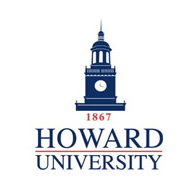Below is a summary of the abstract you submitted. Presenting author(s) is shown in bold.
If any changes need to be made, you can modify the abstract or change the authors.
You can also download a .docx version of this abstract.
If there are any problems, please email Dan at dar78@pitt.edu and he'll take care of them!
This abstract was last modified on March 15, 2023 at 9:23 p.m..

The mycobacteriophages, Simielle, DelRivs, Nyala, and Lumine were discovered and studied by Howard university students during the 2022-2023 academic year. The aim of this research was to discover and explore phage diversity on Howard’s campus through the isolation, characterization, and bioinformatic study of novel bacteriophages with the intent of expanding the scientific knowledge of bacteriophages. The study of bacteriophages in the host bacterium Mycobacterium smegmatis MC2 155 (M. smegmatis) is of medical interest as phage-based therapies are being explored in alternative management and treatment of infections such as M. tuberculosis. Using M. smegmatis as the host, the mycobacteriophages were isolated from environmental soil samples, purified, and amplified to reveal titers ranging from 2.7 x 109 pfu/mL to 1.0 x 1011 pfu/mL. The bacteriophages were then characterized through DNA isolation and restriction enzyme digests. The DNA samples were sequenced by the Pittsburgh Bacteriophage Institute using Illumina Sequencing. Sequencing revealed that all four mycobacteriophages are lytic, part of subcluster B1, and of the Siphoviridae morphotype. Additionally, they have a circularly permuted genome containing 66.5% G+C-content. Their genome lengths ranged from 68297 to 68551 base pairs. Bioinformatic genome annotation is currently being completed using PECAAN and DNA Master to further characterize the phages identifying their similarities and differences.
